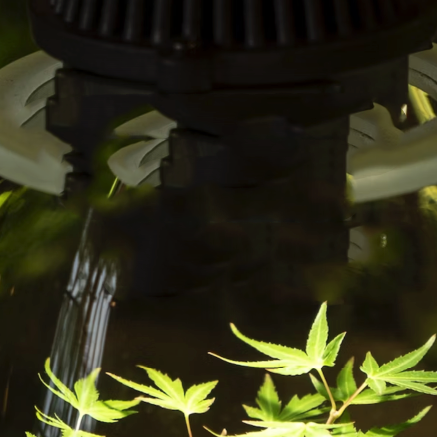What is VPD? (Vapor Pressure Deficit)
VPD (Vapor Pressure Deficit) is an important factor to consider in your hydroponic grow room because it affects the ability of plants to transpire water and uptake nutrients. In short, VPD is a measure of how much water the air can hold, and how much moisture is actually in the air.
A VPD that is too low or too high can cause stress to plants, leading to slower growth and lower yields. If the VPD is too high, plants may become dehydrated and wilted. If the VPD is too low, plants may not be able to transpire enough water, which can lead to root rot and other problems.
To control VPD in your grow room, there are several things you can do:
Monitor VPD: Use a hygrometer to monitor the humidity and temperature in your grow room, and calculate the VPD using a VPD chart or calculator.
Adjust temperature and humidity: Adjust the temperature and humidity in your grow room to achieve the optimal VPD range for your plants; this will depend on the stage of growth your plants are in, as well as the type of plants you are growing. We recomend you using something such as the G.A.S Enviro Controller, we'll come onto why in a second.
Use dehumidifiers and humidifiers: Use dehumidifiers to lower humidity and increase VPD, or humidifiers to increase humidity and lower VPD. These devices can be used to fine-tune the environmental conditions in your grow room - we have a massive range available which will connect perfectly to the G.A.S Enviro Controller for fully automated control! See our range of dehumidifiers and humidifiers here.
Provide proper ventilation: Proper ventilation can help to regulate temperature and humidity in your grow room, and prevent the buildup of stagnant air that can lead to problems with VPD. Hook up an outtake fan and you'll be good to go... you guessed it, you can hook them up to an Enviro Controller!
Overall, controlling VPD in your hydroponic grow room is important for ensuring healthy plant growth and maximizing yields. By monitoring and adjusting the temperature and humidity in your grow room, and using devices like dehumidifiers and humidifiers, you can maintain optimal VPD levels and create the ideal environment for your plants to thrive.
So, when is VPD most important?
VPD (Vapor Pressure Deficit) is important throughout the entire lifecycle of a plant in hydroponic gardening, but it is especially crucial during the stages of active growth and development, which are the vegetative and flowering stages.
Why is VPD so crucial during the vegetative stage?
VPD (Vapor Pressure Deficit) is a critical factor to consider during the vegetative stage of plant growth in hydroponics. It directly impacts a plant's ability to transpire water and absorb nutrients, which is essential during the vegetative stage when plants are actively growing and establishing their structure and foliage.
When VPD is too high, plants can become dehydrated and wilted, while too low VPD levels can lead to root rot and other issues. To ensure healthy growth and development during the vegetative stage, it's crucial to maintain optimal VPD levels, which are generally between 0.8-1.2 kPa.
By monitoring and adjusting VPD levels in the vegetative stage, growers can create the ideal environment for their plants to thrive. This will lead to higher yields and better-quality crops. To achieve the optimal VPD range, growers can use a hygrometer to monitor humidity and temperature, and fine-tune the environmental conditions in their grow room using devices like dehumidifiers and humidifiers. Proper ventilation is also crucial to prevent the buildup of stagnant air that can affect VPD levels.
If you want a full, comprehensive deep-dive into VPD and the charts needed, visit our old blog here
Happy Growing!

